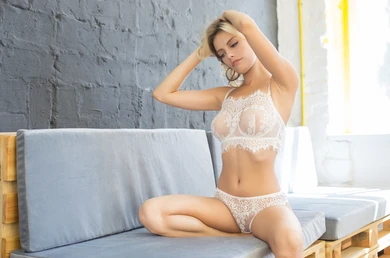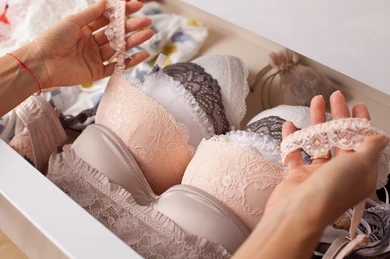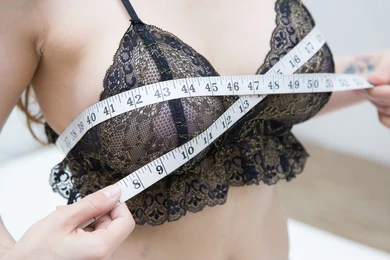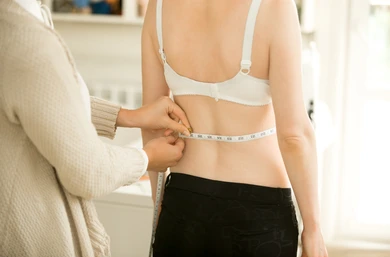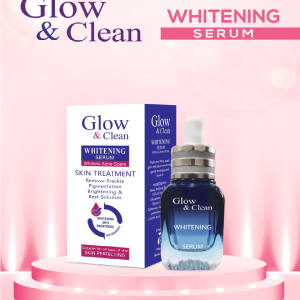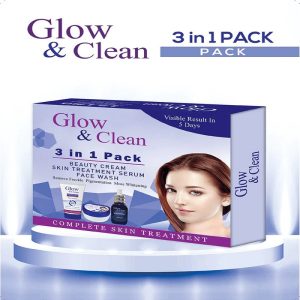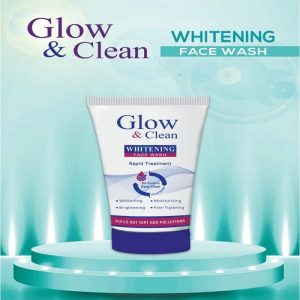How Choose Correct Bra, the best way to Choosing the correct bra is essential for both comfort and support. Because wearing the right bra size and style can make a significant difference in how you look and feel. However, with so many options available, finding the perfect bra can be overwhelming. In this guide, we will provide you with a step-by-step process and important factors to consider when choosing a bra that fits you perfectly. From determining your correct size to selecting the right style for your needs, this guide will help you make an informed decision.
How Choose Correct Bra: Measure Yourself: Determining Your Bra Size
Choose a correct bra and determining your bra size is the first step in finding the correct bra. Here’s a guide to measuring yourself accurately: How Choose Correct Bra, the best way to Choosing the correct bra is essential for both comfort and support. Because wearing the right bra size and style can make a significant difference in how you look and feel.
-
Band Measurement:
- Start by wearing a non-padded bra or no bra at all.
- Take a measuring tape and wrap it around your ribcage, just beneath your bust. Ensure the tape is parallel to the floor and snug against your skin, but not too tight.
- Round the measurement to the nearest whole number.
- This measurement gives you your band size. For example, if your measurement is 32 inches, your band size is 32.
-
Bust Measurement:
- Keep the measuring tape around your back, but this time measure around the fullest part of your bust. Make sure the tape is straight and not too tight.
- Again, round the measurement to the nearest whole number.
-
Calculating Cup Size:
- Subtract your band measurement from your bust measurement.
- Use the difference to find your cup size based on the following chart:
| Difference (in inches) | Cup Size |
- Mathematica Copy code
- 0–1 | AA
- 1–2 | A
- 2–3 | B
- 3–4 | C
- 4–5 | D
- 5–6 | DD/E
- 6–7 | DDD/F
- 7–8 | G
- 8–9 | H
- 9–10 | I
- 10–11 | J
- 11–12 | K
- For example, if your band measurement is 32 inches and your bust measurement is 36 inches, the difference is 4 inches, indicating a cup size of D.
-
Getting a Professional Fitting:
- If you’re unsure about measuring yourself or want additional guidance, consider visiting a lingerie store or department store that offers professional bra fitting services. An expert fitter can assist you in determining your correct bra size and recommend suitable styles for your needs.
Remember that bra sizes can vary between brands, so it’s essential to try on different sizes and styles to find the best fit for you.
How Choose Correct Bra: Understanding Different Bra Styles
Understanding different bra styles can help you choose the right bra that suits your needs, preferences, and outfits. Here are some common bra styles to familiarize yourself with: How Choose Correct Bra, the best way to Choosing the correct bra is essential for both comfort and support. Because wearing the right bra size and style can make a significant difference in how you look and feel.
-
Full Coverage Bras:
- Full coverage bras offer maximum coverage and support. They have cups that fully encase the breasts, providing a secure and comfortable fit. This style is ideal for those with larger busts or those who prefer more coverage and modesty.
-
Demi Bras:
- Demi bras, also known as half-cup bras, have cups that cover about half of the breasts, creating a lower neckline and a more revealing look. They provide less coverage and lift compared to full coverage bras, making them suitable for lower-cut tops or dresses.
-
Balconette Bras:
- Balconette bras have cups that create a lifted and rounded shape while exposing the upper portion of the breasts. The straps are set wider apart, making them ideal for outfits with wide or square necklines. Balconette bras offer a flattering and supportive fit for various breast sizes.
-
Push-Up Bras:
- Topwear Push-up bras are designed to lift and enhance the appearance of the breasts by pushing them upward and closer together. They usually have padding or built-in inserts at the bottom or sides of the cups. Push-up bras are great for creating cleavage and adding volume, making them popular for special occasions or when you want an extra boost.
-
Sports Bras:
- Sports bras are specifically designed to provide support and minimize breast movement during physical activities. They come in different levels of impact support, from low-impact for activities like yoga to high-impact for intense workouts. Sports bras often have features like moisture-wicking fabric, wide straps, and a supportive band.
-
Strapless Bras:
- Strapless bras have no shoulder straps, making them suitable for outfits with strapless or off-the-shoulder necklines. They often have a wide and supportive band that helps them stay in place. Some strapless bras come with detachable straps for added versatility.
-
Bralettes:
- Bralettes are soft, lightweight bras without underwire or molded cups. They usually have a pullover or hook-and-eye closure, and they come in various styles, including lace, crochet, and seamless designs. Bralettes offer a comfortable and trendy option for those who prefer minimal support or want to embrace a more relaxed and casual look.
Remember that each bra style serves different purposes, so it’s helpful to have a variety of bras in your collection to accommodate different outfits, activities, and personal preferences. Experiment with different styles to find the ones that make you feel comfortable, supported, and confident.
Consider Your Body Shape and Outfit Requirements
When choosing the correct bra, it’s important to consider your body shape and outfit requirements. Different bra styles can flatter your figure and work better with specific types of clothing. Here are some tips based on various body shapes and outfit requirements: How Choose Correct Bra, the best way to Choosing the correct bra is essential for both comfort and support. Because wearing the right bra size and style can make a significant difference in how you look and feel.
-
Hourglass Figure:
- For an hourglass figure with a well-defined waist and balanced proportions, most bra styles can work well. Consider styles that enhance your natural curves, such as balconette bras or demi bras. Opt for bras with underwire and good support to maintain a balanced silhouette.
-
Pear-Shaped Figure:
- If you have a pear-shaped figure with narrower shoulders and fuller hips, focus on balancing your proportions. Look for bras that provide lift and create the illusion of a fuller bust, such as push-up bras or padded bras. Balconette or demi bras can also help draw attention to the upper body.
-
Apple-Shaped Figure:
- For an apple-shaped figure with a fuller midsection and slimmer hips, choose bras that offer support and create a smooth silhouette. Full coverage bras or minimizer bras can help provide coverage and minimize the appearance of the bust. Look for bras with a wide, supportive band and side panels for extra support.
-
Athletic Figure:
- If you have an athletic figure with broader shoulders and a more straight-up-and-down shape, consider bras that add curves and enhance your feminine shape. Push-up bras or bras with padding can create the illusion of a fuller bust. Balconette or demi bras can also provide a more rounded look.
-
Necklines and Clothing Compatibility:
- Consider the types of necklines and clothing styles you frequently wear. For low-cut or plunging necklines, a demi or push-up bra can work well. Strapless bras are ideal for shoulder-baring or off-the-shoulder outfits. T-shirt bras with smooth, seamless cups are great for wearing under fitted tops or tees. Consider the versatility of your bra collection to ensure you have options that work with various outfits.
Remember, these tips are general guidelines, and personal preference plays a significant role in choosing the right bra for your body shape and outfit requirements. Ultimately, choose bras that make you feel comfortable, confident, and supported, no matter your body shape or the style of clothing you prefer.
How Choose Correct Bra for Assessing Comfort and Support
When choosing a correct bra, assessing comfort and support is crucial to ensure a pleasant wearing experience throughout the day. Here are some factors to consider when evaluating the comfort and support of a bra:
-
Underwire vs. Wireless Bras:
- Underwire bras provide additional support and lift by using a wire underneath the cups. They are ideal for those with larger busts or those seeking more shaping and definition. However, some individuals may find underwire bras uncomfortable or restrictive. Wireless bras, on the other hand, offer a more relaxed fit and are generally more comfortable for everyday wear.
-
Fabric and Material:
- Pay attention to the fabric and material used in the bra. Look for bras made from breathable and moisture-wicking materials like cotton, microfiber, or sports-performance fabrics. These fabrics can help keep you cool and dry, especially during active or warmer days.
-
Adjustability and Strap Options:
- Consider the adjustability of the bra straps and band. Adjustable straps allow you to customize the fit and ensure proper support. Look for bras with multiple hook-and-eye closures to provide flexibility as your body changes or throughout the day. Additionally, some bras offer convertible or adjustable straps that can be worn in different configurations, such as crisscross or halter, to accommodate various clothing styles.
-
Evaluating Band Fit:
- The band of the bra should fit snugly around your ribcage, providing support without feeling too tight or digging into your skin. Make sure the band lies flat against your body and remains in place throughout the day. If the band rides up your back, it may be too loose, and if it feels overly tight or constricting, you may need a larger band size.
-
Cup Fit:
- The cups of the bra should fully encase your breasts without any spillage or gaps. Ensure that your breasts are centered in the cups, and the underwire (if applicable) sits comfortably around the breast tissue. If you notice spillage over the cups or gaping, you may need to adjust the cup size.
-
Verifying Strap and Band Adjustments:
- Check that the bra straps are neither too loose nor too tight. They should stay in place on your shoulders without digging in or sliding off. Adjust the straps to ensure a comfortable fit. Additionally, verify that the band is level all around your torso and doesn’t dig into your skin. Proper strap and band adjustments are essential for optimal comfort and support.
-
Comfort and Range of Motion:
- Move around and perform some basic activities while wearing the bra to assess its comfort and range of motion. Ensure that the bra allows for comfortable movement without restricting your arms, shoulders, or torso. A well-fitting bra should feel supportive and secure while allowing you to move freely and comfortably.
Remember, comfort and support are subjective, so it’s essential to prioritize your own preferences and comfort level when selecting a bra. Try on different styles, adjust the fit as needed, and trust your instincts to find the bras that make you feel at ease and supported throughout the day.
Prioritizing Your Lifestyle and Activities
When choosing a correct bra, it’s important to consider your lifestyle and the activities you engage in regularly. Different activities may require specific types of bras to provide the necessary support and comfort. Here are some considerations based on various lifestyles and activities:. How Choose Correct Bra, the best way to Choosing the correct bra is essential for both comfort and support. Because wearing the right bra size and style can make a significant difference in how you look and feel.
-
Everyday Bras:
- For everyday wear, prioritize bras that offer comfort, support, and versatility. Look for bras with a good balance of coverage, shaping, and smoothness. T-shirt bras or seamless bras are great options as they provide a seamless look under clothing. Choose fabrics that are breathable and suitable for all-day wear.
-
Special Occasion Bras:
- For special occasions or formal events, consider bras that offer extra lift, support, and aesthetic appeal. Push-up bras, balconette bras, or bras with lace or embellishments can enhance your silhouette and complement your outfits. Pay attention to the style of the neckline and the support required for your chosen attire.
-
Maternity and Nursing Bras:
- If you’re pregnant or nursing, prioritize bras specifically designed for maternity and nursing needs. Maternity bras provide extra support and accommodate changes in breast size during pregnancy. Nursing bras have convenient features like drop-down cups or clips for easy breastfeeding access. Look for bras with stretchy and breathable fabrics to accommodate changes in breast size and ensure comfort.
-
Sports Bras for Different Activities:
- Engaging in physical activities requires specialized sports bras to minimize breast movement and provide adequate support. Consider the level of impact of your activities:
- Low-Impact Activities: For activities like yoga or walking, opt for low-impact sports bras that offer light support and freedom of movement.
- Medium-Impact Activities: For activities like cycling or hiking, choose medium-impact sports bras with more support and compression to reduce bounce.
- High-Impact Activities: For intense activities like running or aerobics, prioritize high-impact sports bras that provide maximum support, encapsulation, and moisture-wicking properties.
- Engaging in physical activities requires specialized sports bras to minimize breast movement and provide adequate support. Consider the level of impact of your activities:
-
Comfort during Travel:
- When traveling, especially on long journeys, prioritize comfort. Choose bras with soft fabrics and minimal seams to prevent irritation. Wireless bras or bralettes can provide a relaxed fit, while still offering adequate support. Consider your outfit choices during travel and ensure the bra you choose is compatible with the clothes you plan to wear.
-
Consider Active or Outdoor Lifestyles:
- If you have an active or outdoor lifestyle, look for sports bras or active bras that provide comfort, breathability, and support during your activities. Moisture-wicking fabrics and additional features like adjustable straps or removable pads can enhance your comfort and performance.
It’s essential to have a variety of bras that cater to your different lifestyle needs. Consider the activities you engage in regularly and choose the correct bra that offers the appropriate level of support, comfort, and functionality. Prioritizing your lifestyle and activities will help you find bras that seamlessly integrate into your daily routine and enhance your overall comfort and well-being.
Pay Attention to Quality and Durability
When choosing a correct bra, paying attention to quality and durability is important to ensure that you invest in a bra that will last and provide reliable support over time. Here are some factors to consider when assessing the quality and durability of a bra:
-
Choosing Reliable Brands:
- Opt for reputable and well-known brands that have a track record of producing high-quality bras. Established brands often prioritize quality materials, construction, and attention to detail in their products.
-
Checking Construction and Stitching:
- Examine the construction and stitching of the bra. The seams should be neat, sturdy, and securely stitched. Check for any loose threads, uneven stitching, or signs of poor craftsmanship, as these can indicate lower quality and potential durability issues.
-
Longevity and Care Instructions:
- Look for information on the expected longevity of the bra. Some bras may have an estimated lifespan indicated by the manufacturer. Additionally, review the care instructions provided with the bra to ensure that you can properly maintain and care for it to maximize its lifespan. Follow the recommended washing and drying methods to prevent unnecessary wear and tear.
-
Assessing Fabric and Material:
- Evaluate the fabric and material used in the bra. High-quality bras often utilize durable and comfortable materials like nylon, polyester, spandex, or cotton blends. Consider the breathability, stretchability, and moisture-wicking properties of the fabric to ensure optimal comfort and longevity.
-
Elasticity and Recovery:
- Pay attention to the elasticity and recovery of the bra’s components, such as the band and straps. The elastic should feel firm and have good recovery, meaning it returns to its original shape after stretching. This ensures that the bra maintains its support and fit over time.
-
Reviews and Recommendations:
- Check customer reviews and recommendations for the specific bra or brand you’re considering. Reviews can provide insights into the durability, comfort, and overall satisfaction of other individuals who have tried the bra. Look for feedback on long-term wear and durability to get a better idea of the bra’s quality.
Remember, investing in a high-quality bra may come with a higher price tag, but it can be worth it for the improved longevity and performance. How Choose Correct Bra, the best way to Choosing the correct bra is essential for both comfort and support. Because wearing the right bra size and style can make a significant difference in how you look and feel. A well-made and durable bra will provide reliable support, maintain its shape, and last longer, saving you money in the long run. Consider your budget and prioritize bras that offer the best combination of quality, durability, and value for your specific needs.
Trying On and Evaluating the Fit
When selecting a correct bra, it’s essential to try it on and evaluate the fit before making a final decision. Here are some steps to follow when trying on bras and assessing their fit:
-
Visual Indicators of a Good Fit:
- Stand in front of a mirror and visually assess the fit of the bra. The center gore (the piece of fabric between the cups) should lie flat against your chest, and the underwire, if present, should enclose the breast tissue without poking or digging into the skin. The cups should fully contain your breasts without any spillage or gaps. How Choose Correct Bra, the best way to Choosing the correct bra is essential for both comfort and support. Because wearing the right bra size and style can make a significant difference in how you look and feel
-
Checking Band Fit:
- Put on the bra and fasten it on the loosest hook. The band should feel snug and sit parallel to the floor around your ribcage. It should provide support without feeling overly tight or restrictive. Lift your arms and move around to ensure that the band stays in place and doesn’t ride up. How Choose Correct Bra, the best way to Choosing the correct bra is essential for both comfort and support. Because wearing the right bra size and style can make a significant difference in how you look and feel
-
Assessing Cup Fit:
- Check that the cups fully encase your breasts without any overflow or empty spaces. The cups should have a smooth and seamless appearance under clothing. If the cups feel too small, causing spillage or creating a “double-bust” effect, you may need a larger cup size. If the cups have excess space or wrinkling, you may need a smaller cup size.
-
Verifying Strap and Band Adjustments:
- Adjust the bra straps to ensure a comfortable fit. The straps should stay in place on your shoulders without digging into your skin or slipping off. They should provide support without causing discomfort. Adjust the band hooks to a tighter or looser setting if needed, making sure it feels secure and comfortable.
-
Comfort and Range of Motion:
- Move around, bend, and stretch to evaluate the comfort and range of motion provided by the bra. Check if the bra allows you to move freely without causing any discomfort or restriction. Assess how it feels during different activities or postures that are relevant to your lifestyle. How Choose Correct Bra, the best way to Choosing the correct bra is essential for both comfort and support. Because wearing the right bra size and style can make a significant difference in how you look and feel.
-
Additional Considerations:
- Pay attention to other factors that contribute to your comfort, such as the texture of the fabric against your skin, the presence of any irritating elements like tags or seams, and the overall feel of the bra on your body. Consider your personal preferences and ensure that the bra aligns with your specific comfort requirements.
Remember that everyone’s body is unique, and what works for someone else may not work for you. Don’t be discouraged if you need to try on multiple bras or different sizes before finding the perfect fit. It’s worth taking the time to ensure that the bra you choose provides the support, comfort, and confidence you deserve.
Reevaluating Your Size Regularly
It’s important to reevaluate your bra size regularly as changes in weight, body shape, and hormonal fluctuations can affect your measurements. Here are some factors to consider and signs that indicate it’s time to reevaluate your bra size:
-
Weight Changes:
- If you’ve recently gained or lost a significant amount of weight, it can impact your correct bra size. Fluctuations in weight can affect the measurements of your band and cup size. It’s advisable to re-measure yourself and try on bras in different sizes to find the best fit for your current body shape.
-
Pregnancy and Breastfeeding:
- Pregnancy and breastfeeding can cause changes in breast size and shape. During pregnancy, your breasts may increase in size due to hormonal changes and preparation for breastfeeding. After giving birth and during the breastfeeding period, your breasts may continue to change in size as milk production fluctuates. Re-measuring and investing in maternity and nursing bras can provide the necessary support and comfort during this time.
-
Hormonal Changes:
- Hormonal fluctuations throughout the menstrual cycle can also impact breast size and tenderness. Some individuals may notice that their breasts feel fuller or more sensitive during certain phases of their cycle. It’s essential to be aware of these changes and consider adjusting your bra size or choosing bras that accommodate these fluctuations.
-
Signs of an Ill-Fitting Bra:
- If you experience any of the following signs, it may indicate that your bra size needs reevaluation:
- Straps that dig into your shoulders or leave marks.
- The band feels overly tight or rides up your back.
- Cups that are too small and cause spillage or too large and have gaps.
- Underwire that pokes or feels uncomfortable.
- Overall discomfort or lack of support.
- Changes in the appearance of your breasts when wearing bras.
- If you experience any of the following signs, it may indicate that your bra size needs reevaluation:
-
Changes in Body Shape:
- Changes in body shape, such as muscle gain or loss, can affect the distribution of fat and the overall shape of your breasts. It’s important to consider these changes and re-measure yourself to ensure your bra size still provides the necessary support and fit.
It’s generally recommended to re-measure and reassess your bra size every 6 to 12 months or whenever you notice significant changes in your body or signs of an ill-fitting bra. Keep in mind that bra sizes can vary between brands, so it’s essential to try on bras in different sizes and styles to find the most comfortable and supportive fit for you.
Conclusion
How choose correct bra, the best way to Choosing the correct bra is an important step in maintaining comfort and confidence throughout your day. By following the steps outlined in this guide, such as measuring yourself accurately, understanding different bra styles, considering your body shape and outfit requirements, assessing comfort and support, prioritizing your lifestyle and activities, and paying attention to quality and durability, you can make an informed decision when selecting a bra that fits you perfectly.
Investing time in finding the perfect bra will enhance your overall well-being, provide necessary support, and boost your confidence. Don’t hesitate to seek professional assistance, especially if you’re unsure about your measurements or need additional guidance. With the right bra, you can feel comfortable, supported, and fabulous in any outfit or activity.
FAQs
How choose correct bra and how do I measure myself for a bra?
To measure yourself for a correct bra, you’ll need to measure your band size and bust size. Wrap a measuring tape around your ribcage, just beneath your bust, to determine your band measurement. Then, measure around the fullest part of your bust. Subtract your band measurement from your bust measurement to calculate your cup size. For more accuracy, consider getting a professional fitting. How Choose Correct Bra, the best way to Choosing the correct bra is essential for both comfort and support. Because wearing the right bra size and style can make a significant difference in how you look and feel.
How do I know which bra style is right for me?
The right bra style depends on your personal preferences, body shape, and outfit requirements. Full coverage bras provide maximum support and coverage, while demi bras offer a more revealing look. Balconette bras enhance cleavage, push-up bras add volume, and sports bras are designed for active lifestyles. Consider your needs and try different styles to find what suits you best.
How often should I reevaluate my bra size?
It’s recommended to reevaluate your bra size every 6 to 12 months or whenever you notice changes in your body, such as weight loss or gain, pregnancy, or hormonal fluctuations. If you experience discomfort or notice signs of an ill-fitting bra, it’s a good idea to re-measure and reassess your size.
How can I tell if a bra fits me properly?
A properly fitting bra should have a snug but comfortable band that stays in place without riding up. The cups should fully encase your breasts, with no spillage or gaps. The straps should not dig into your shoulders, and they should be adjustable for a customized fit. Additionally, you should be able to move freely without any discomfort or restriction.
What should I look for in terms of bra quality and durability?
When considering bra quality, look for reliable brands known for their craftsmanship and attention to detail. Check the construction and stitching to ensure durability. Additionally, consider the fabric and material used, as well as the care instructions provided by the manufacturer.
Can I wear the same bra for all activities?
While some bras are versatile enough to be worn for various activities, it’s generally recommended to choose bras specifically designed for different purposes. Everyday bras are suitable for daily wear, while sports bras offer additional support during physical activities. Special occasion bras provide enhanced aesthetics, and maternity/nursing bras cater to the needs of pregnant and breastfeeding women.
Where can I get a professional bra fitting?
Many lingerie stores and department stores offer professional bra fitting services. Look for specialized lingerie boutiques or consult with the sales associates at the store to find out if they provide fitting services. Some stores may even have certified bra fitting experts who can help you find the perfect fit.
What are the signs of an ill-fitting bra?
Signs of an ill-fitting bra include discomfort, digging or red marks on the shoulders from tight straps, underwire poking or digging into the skin, spillage or gaps in the cups, a band that rides up or feels too tight, or a lack of support and lift.

